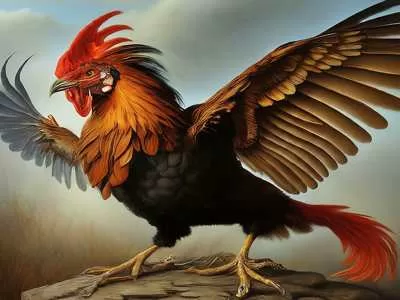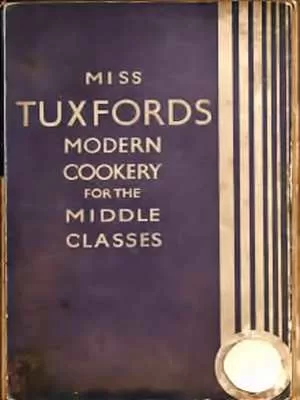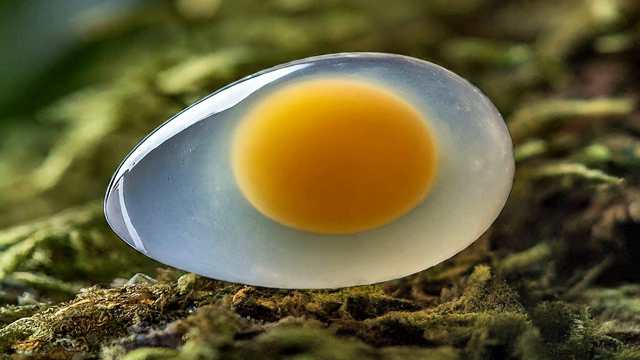Many years ago, I had the unique experience of working on a poultry farm. One of the intriguing phenomena we encountered was the occurrence of “wind eggs.” These are the first eggs laid by young hens, often before their reproductive systems are fully developed.
Key Points
Wind eggs are typically small, misshapen, and sometimes lack a hard shell, resembling a leathery bag instead. Interestingly, they usually do not contain a yolk.
In folk tradition, these peculiar eggs are referred to as “cock’s eggs.” Legends suggest that if a cock’s egg were to be hatched—sometimes with the help of a toad or a serpent—the result would be a mythical creature known as a cockatrice. This fearsome beast, depicted with the head of a cockerel, the wings of a dragon, and the tail of a snake, was said to possess a baleful stare capable of turning men to stone or unleashing fire upon everything it gazed upon.

The cockatrice is often mentioned alongside the basilisk in medieval bestiaries, with the two creatures being virtually interchangeable. The basilisk sometimes lacks wings or features a snake’s head at the end of its tail. The fascination with these mythical creatures extended into culinary traditions, as evidenced by a recipe for a cockatrice found in a medieval cookery manuscript.
A Royal Dish: The Cockatrice Recipe
The recipe, known as “Cokyntryce,” is a remarkable example of medieval culinary creativity. It instructs the cook to take a capon (a castrated rooster) and a pig, scald them, and prepare them in a specific manner. The capon is cut in half, and the pig is treated similarly. The two are then sewn together, creating a fantastical dish that is both visually striking and delicious. The final touch involves roasting the creation on a spit and adorning it with egg yolks, powdered ginger, saffron, and parsley juice before serving it as a royal feast.

This type of dish, known as an “entremet” or “subtlety,” was popular in the Middle Ages. These culinary creations often involved taking one food item and transforming it into something entirely different, or concealing one dish within another. A famous example is the nursery rhyme “Four-and-Twenty Blackbirds,” which is believed to have originated from a Cornish Twelfth Night celebration where a pie filled with blackbirds was served.
Culinary Curiosities of the Past
The medieval period was rich with culinary curiosities and unexpected combinations of flavors. Sweet and sour dishes were particularly favored, long before the introduction of Chinese cuisine to Europe. For instance, chicken could be paired with gooseberries, while hare might be served with a pudding made from dried and fresh fruits, sugar, and wine.
The art of presentation was also paramount, with dishes designed to delight the eye as well as the palate. Colorful tarts featuring black prunes, white egg filling, and yellow yolks were common, and even fowl could be molded from breadcrumbs, sugar, and cinnamon to create an impressive centerpiece.

However, many of these historical dishes have been lost to time. Who today has tasted quiddany, hachy, or tansy? Have you ever enjoyed a drink of sack with cloven gilly-flowers or a pint of cock-ale? The culinary landscape of the past was filled with unique flavors and ingredients that have largely disappeared from modern menus.
The Legacy of Historical Recipes
In her article “Cornish Feasts and ‘Feasten’ Customs,” Miss M. A. Courtney notes that the pie containing four-and-twenty blackbirds was a staple of Cornish celebrations. Some sources even suggest that the rhyme “Sing a Song of Sixpence” dates back to the time of Henry VIII, with the blackbirds symbolizing the monks displaced by the Dissolution of the Monasteries.
Interestingly, rook pie was once a common dish, and recipes for it can still be found in cookbooks from the 1930s. One such book, “Miss Tuxford’s Modern Cookery for the Middle Classes,” offers a glimpse into the culinary preferences of the time, featuring dishes like ragout of tripe and boiled sheep’s head.
The contrast between the elaborate dishes of the upper classes and the simpler fare of the lower classes raises questions about the accessibility of these historical recipes. Could the average person truly appreciate the intricacies of Miss Tuxford’s salmon salad, composed of canned salmon, tomatoes, and lettuce?
Conclusion
The culinary history surrounding wind eggs, cockatrices, and medieval cuisine is a fascinating exploration of creativity, tradition, and the evolution of taste. As we delve into the past, we uncover a world of flavors and dishes that have shaped our modern culinary landscape. While many of these unique recipes may be lost to time, their legacy continues to inspire chefs and food enthusiasts alike. The next time you crack an egg, consider the rich history and folklore that surrounds it, and perhaps even try your hand at recreating a dish from the past.




















